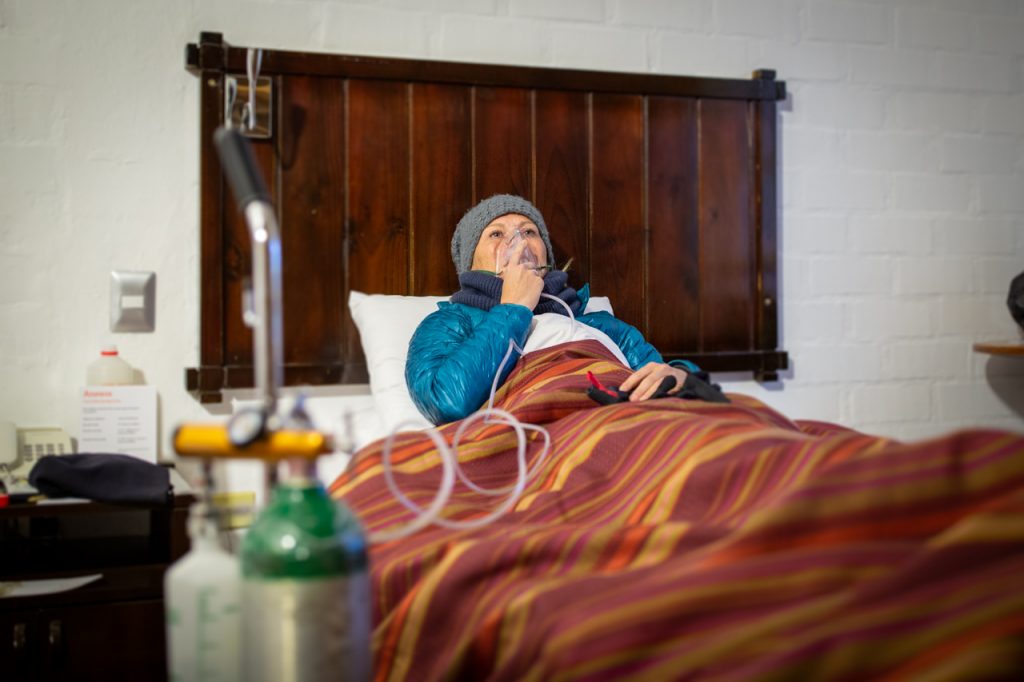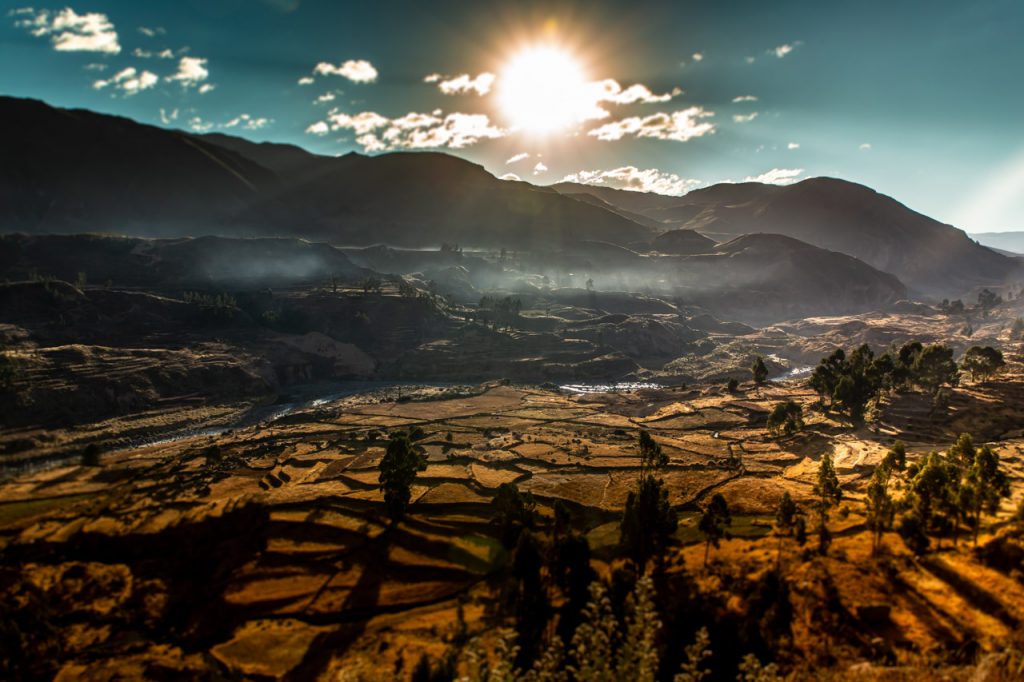The highlands are the heart of Peru. Up here, the natives live as they always have. Surrounded by llamas, living volcanoes, endless plains, and the world’s longest mountain range. We went on a road trip that took us all the way up to the dizzying heights.
Written by Mette / Photo by Martin
Translated from Danish
“How do you feel about heights?” The question comes from Fernando early in the morning on the sixth day of our roundtrip in Peru. He has just picked us up at the hotel in Arequipa and, together with a driver, he will be our local guide on a two-day road trip into the Peruvian highlands.
It is a rather abstract question for a Dane. Seen in the light of our pancake-flat country. But in this case, we can answer that we have had a great time in Arequipa, which is located at an altitude of 2.300 meters, and on other trips we have trekked at 3.000 meters without problems. However, it is not quite comparable to the heights we are going to experience on this journey.
We are heading towards a landscape that resides at the same height as the top of Mont Blanc – the highest mountain in western Europe.
Ahead lies a drive that brings spectacular views but also elements of unpredictability. We will be crossing mountains at an altitude of 5.000 meters, where there is half as much oxygen as we are used to at the coast. No matter how fit you are, it’s impossible to know how you’ll react in the thinner layers of air. Altitude sickness is a factor. And the blind passenger on the tour.
After picking up two other couples who will be joining us in the spacious minibus, we, therefore, make an important stop on the way. Fernando takes us to his local grocery store where we can buy an altitude sickness kit: lots of drinking water and leaves from a notorious plant – the coca plant.
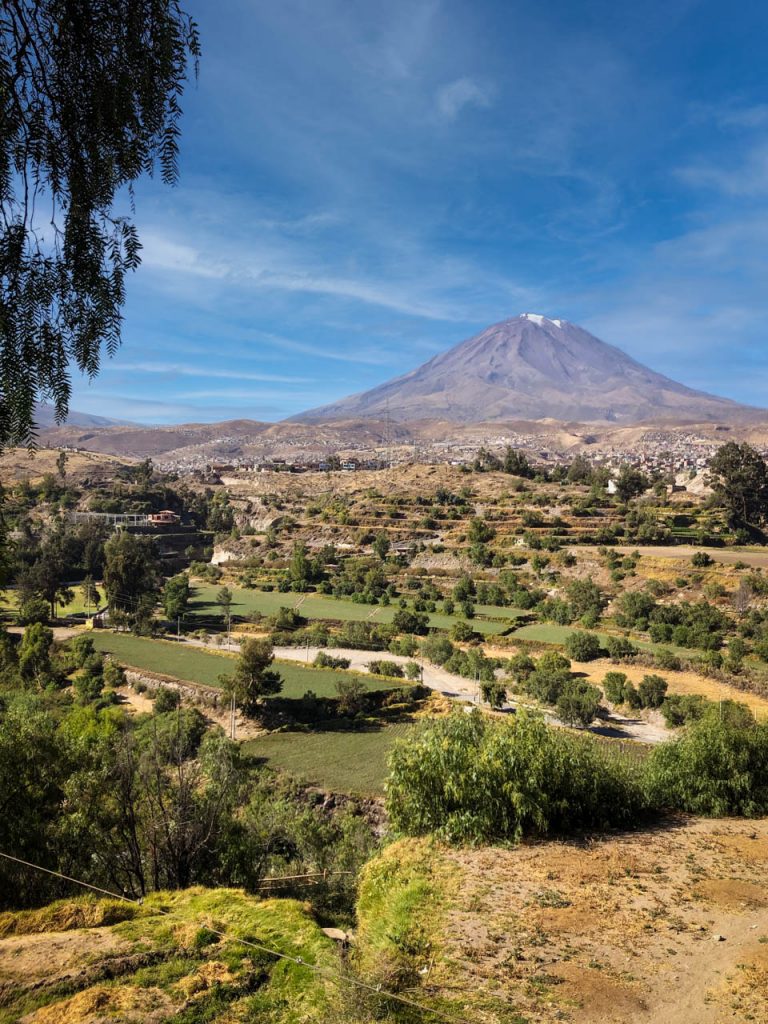
Nature’s illegal miracle plant
A bag of dried coca leaves is a mandatory accessory on any trip to the highlands of Peru and a cornerstone of Peruvian culture. In the rest of the world, the same bag would earn you a trip to prison for possession of illegal drugs. But here, and in Bolivia, you can buy coca legally on any street corner.
Coca is one of the most notorious plants in world history
For millennia, the Indians have cultivated the plant as something holy and used the leaves as a natural medicine and part of the diet. Coca is rich in important vitamins and minerals, and if you consume 100 grams, you get more nutrients than is recommended in the daily diet in the West.
From a scientific perspective, the leaves are a so-called superfood. They improve digestion, have an invigorating effect like caffeine, raise the pulse and body temperature, and stimulate the nervous system. Highland Indians have therefore always used the leaves to be able to endure the work in the harsh Andes.
So why is it that you are not allowed to grow coca at home in the greenhouse? Why does the UN want the total eradication of the plant? The answer is that you can extract the narcotic substance cocaine from the green leaves. However, you don’t have to worry about ending up as an addict when you consume coca leaves. You have to consume 13 kilos to achieve the effect of 1 gram of cocaine. So even for the most enthusiastic of eaters, it seems like mission impossible.
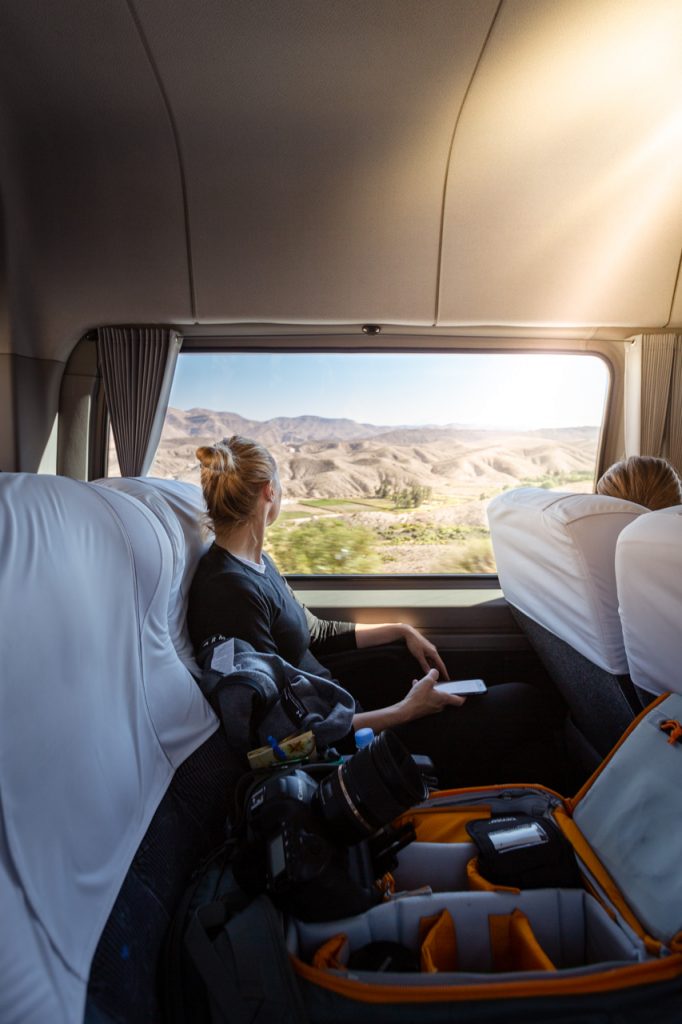
The cure for altitude sickness
“We have an oxygen bottle with us in case you feel unwell”, Fernando says, as he reviews what we will experience along the way on the drive and how we should behave in the heights. “But hopefully we won’t use it”, he utters, shaking his own bag of dried coca leaves.
Coca is known for counteracting altitude sickness, which in mild form is manifested by headache, dizziness, and nausea. The symptoms are related to a too-rapid ascent, and on a round trip in the highlands of Peru, it is common to feel slightly unwell while the body gets used to the thinner air.
Coca is an ancient cure against altitude sickness
Many travelers in Peru make the classic mistake of flying directly from the coast of Lima to the Inca capital of Cusco, located at an altitude of 3.400 meters. As a welcome gift, most people get a crunching headache and a few days in bed.
Travel guides therefore often suggest that you wash down altitude sickness with pills. But if you ask the doctor for advice, the best medicine is to include acclimatization in the travel plan. And that you keep your body hydrated and avoid overexertion. In addition, the locals recommend that you do as the Indians have done for millennia: Drink, eat, and chew coca leaves.
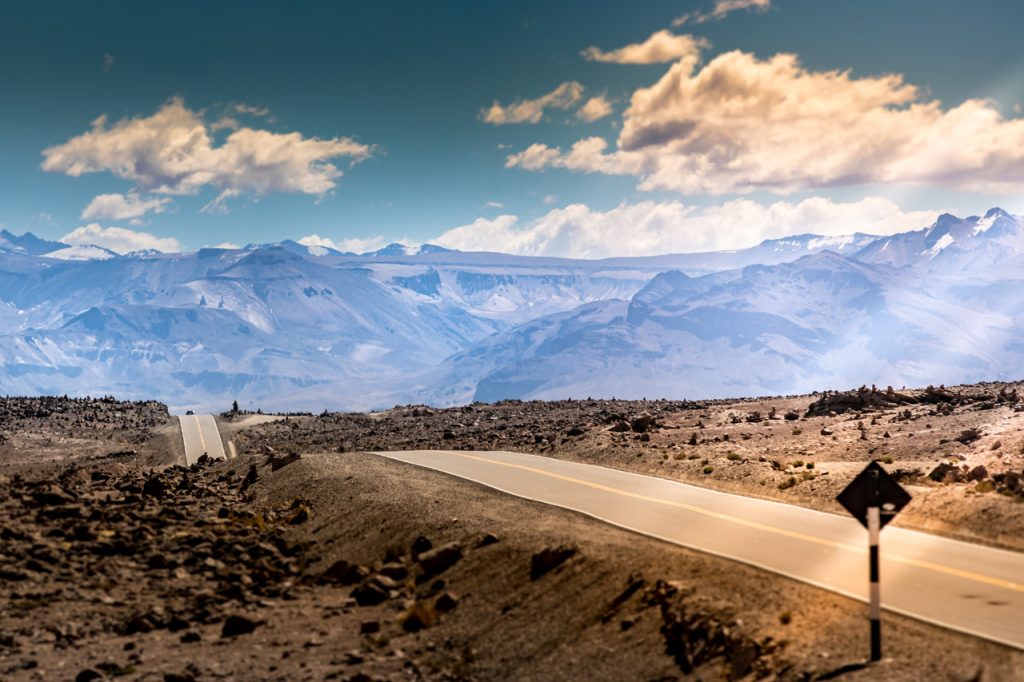
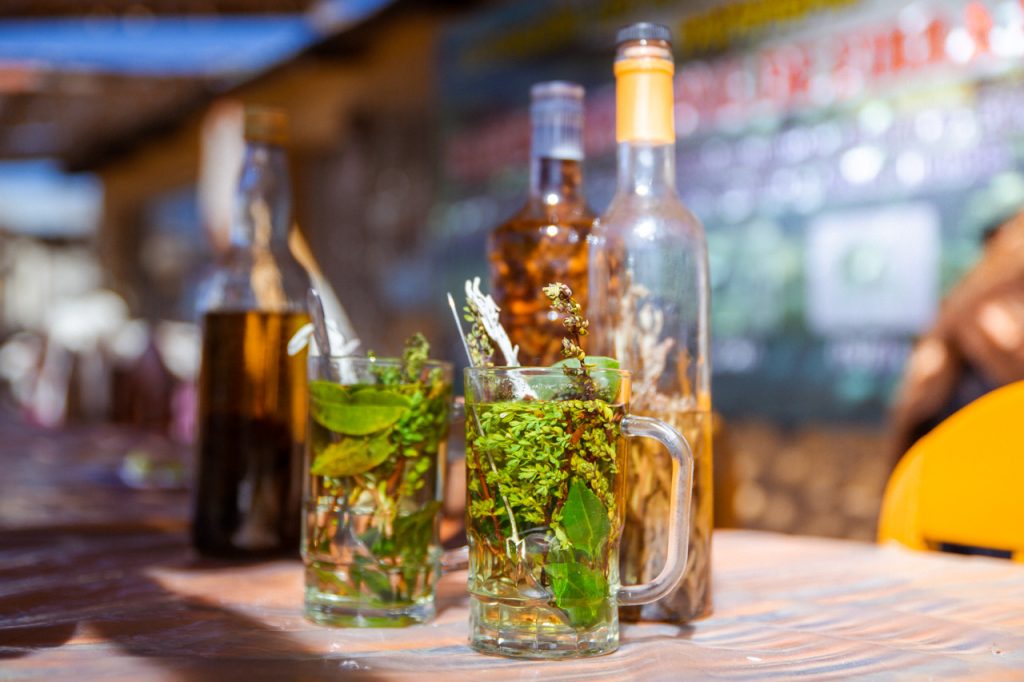
For the Peruvians, coca is as much a part of their everyday life as coffee is for us. In every supermarket we find products with added coca – everything from candies, beer, shampoo, and toothpaste. The most famous product is Coca Cola, which, however, stopped adding the leaves back in 1904, when the marketing law had a slightly different set of rules. At the time, the soft drink was known as:
“A kind of spring water that strengthens the poor man’s soul.”
Back in the minibus, Fernando proves to be a skilled user of coca. With seasoned movements, he demonstrates how we can use dried coca leaves to get their beneficial effect. They must be chewed. And chewing coca feels a bit like using snuff.
You start by rolling 10 leaves around a small stone-like lump consisting of ash and lime. It kick-starts the leaves’ stimulation and reduces their bitter taste. Chew the roll 4-5 times and hold it together in one cheek. Switch sides after 5-10 minutes and swallow the juice with the mouth water. After chewing, you can choose to swallow the remains or spit it out. However, you must do the latter discreetly, as it is considered an insult to Mother Earth to spit on the ground.
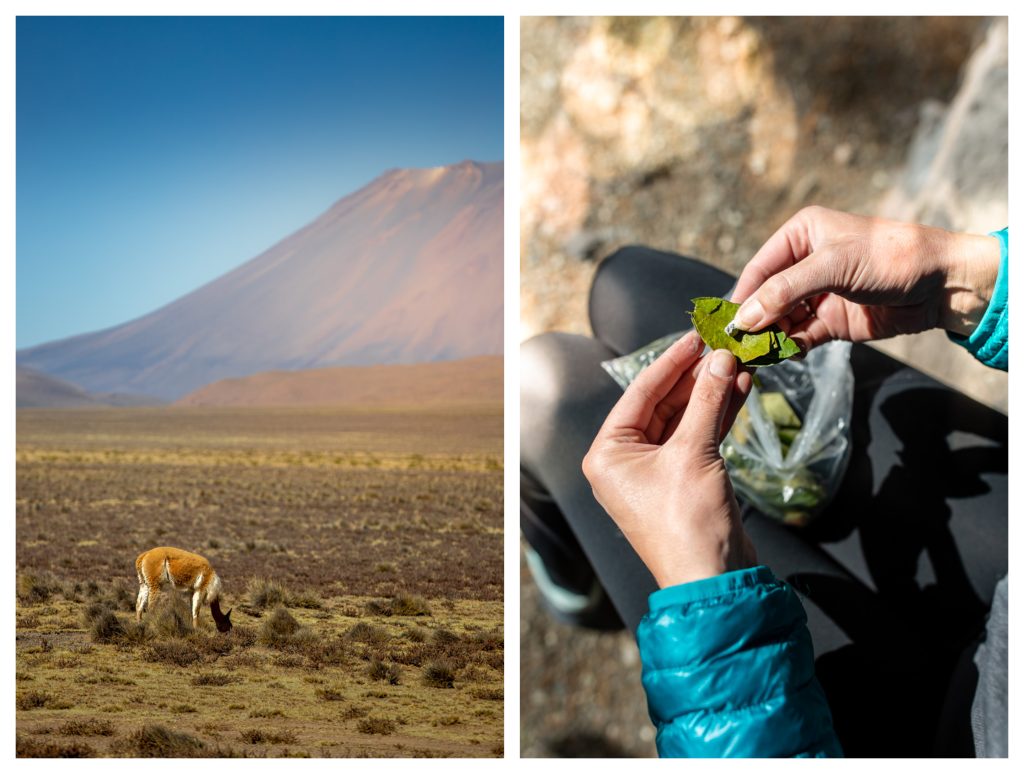
On llama safari
Stocked up on supplies, we drive towards the first sights of the tour. The Altiplano plateau, located at an altitude of 3.700 meters, and the large national park Salinas Aguada Blanca, where wild vicuñas live a protected life, side by side with the highland farmers’ livestock of goats, sheep, alpacas, and llamas.
“Promise me you’ll never touch their ears!” Even the driver laughs along on the bus when Fernando tells how he was once spat on by a llama. “It felt like a hard hail of saliva!”
Together with the alpaca, the woolly animal is known as the camel of South America and, despite the high cuteness factor, is anything but a cuddler.
A llama can spit over 10 meters … and remarkably accurate.
The vicuña is their graceful cousin. The caramel-colored animal looks like a fluffy antelope and has been close to extinction due to its fine wool. With a kilo price of 600 USD, vicuña is the world’s most expensive wool. We burst out laughing in a shop in Arequipa when we were told the price of a simple cardigan – 3.500 USD!
On the other side of the minibus window, the surroundings quickly begin to change character. We have not driven long before Arequipa’s bustling life and lush valleys are replaced by a hilly mountain landscape in barren colours. It looks like a mix of something from a western movie and a distant planet. The view is both enchanting and wonderful – and huge!
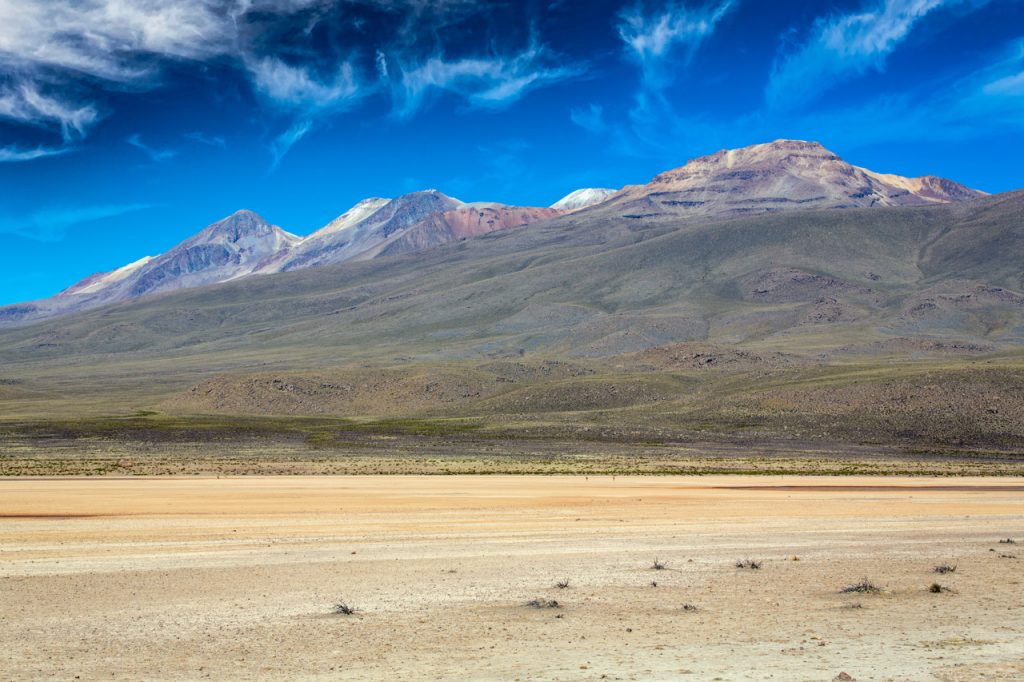
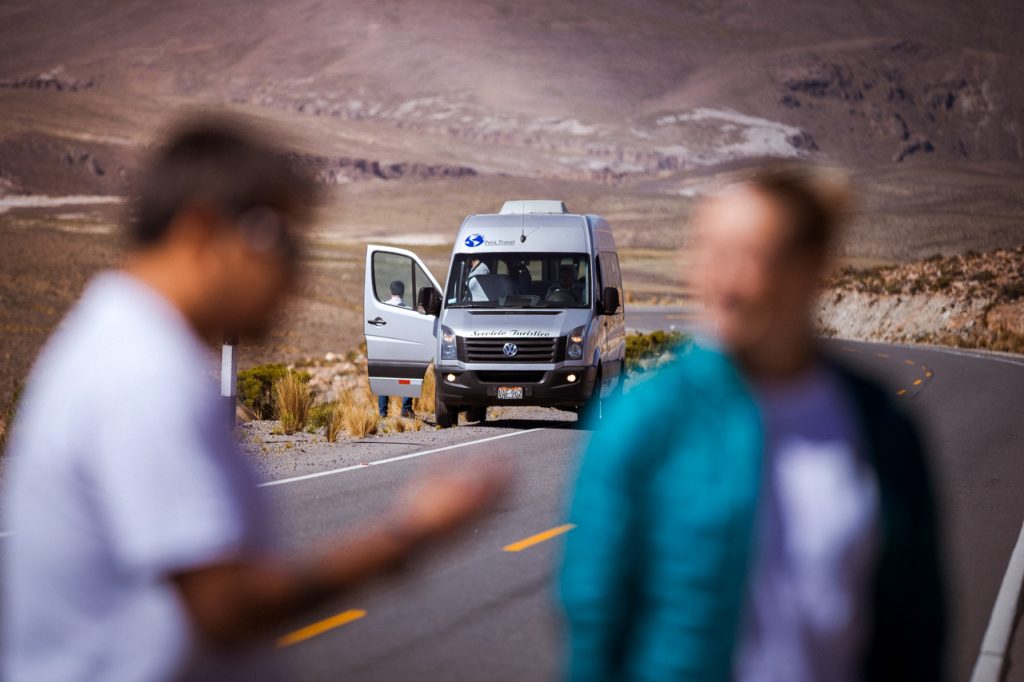
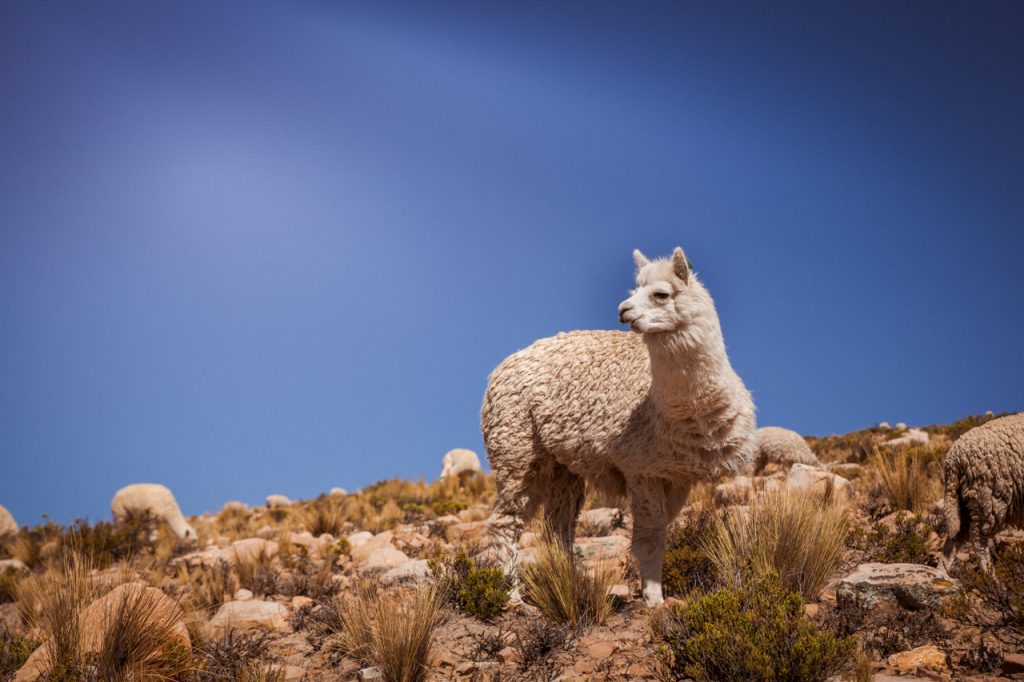
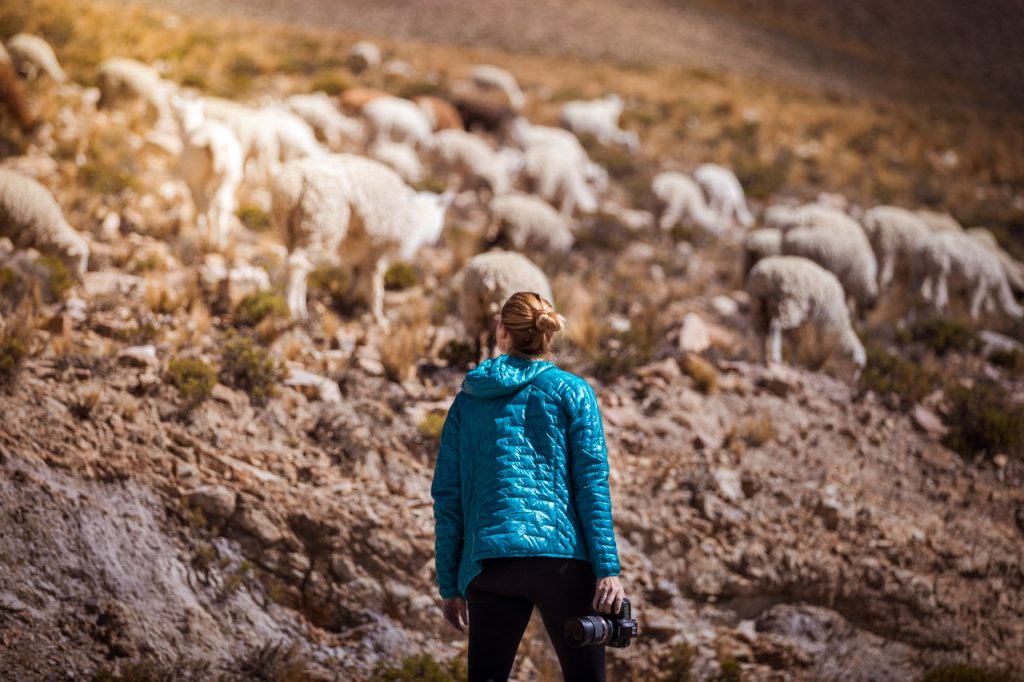
The higher up we go, the wider the expanses become. Other plains unfold as far as the eye can see, while snow-capped peaks light up against the blue sky on the horizon. And between loose stones on the ground, sharp tufts of grass stick up, as if they have blasted their way up through the hard surface.
The grass is the primary food for vicuñas, llamas, and alpacas, and one by one, the animals begin to appear. At first as furry patches far out on the high plain until a little later we meet both small and large flocks along the road. The shy vicuñas keep to themselves, far away from the road, but we often see lone shepherds herding large herds of llamas very close by.
Soon the animals can be seen here and there. It feels a bit like being on some kind of llama safari as the minibus climbs up through the countryside toward the tour’s highest point. And the higher up we go, the slower the driver drives. Even the engine seems to get out of breath more easily in the thinner layers of air.
All the while we are munching away on coca leaves. It tastes bitter of green tea and dried seaweed. Right away, we don’t feel any noticeable difference from chewing coca, apart from a slight tingle on the tongue. Like an anaesthetic that is wearing off after a visit to the dentist.
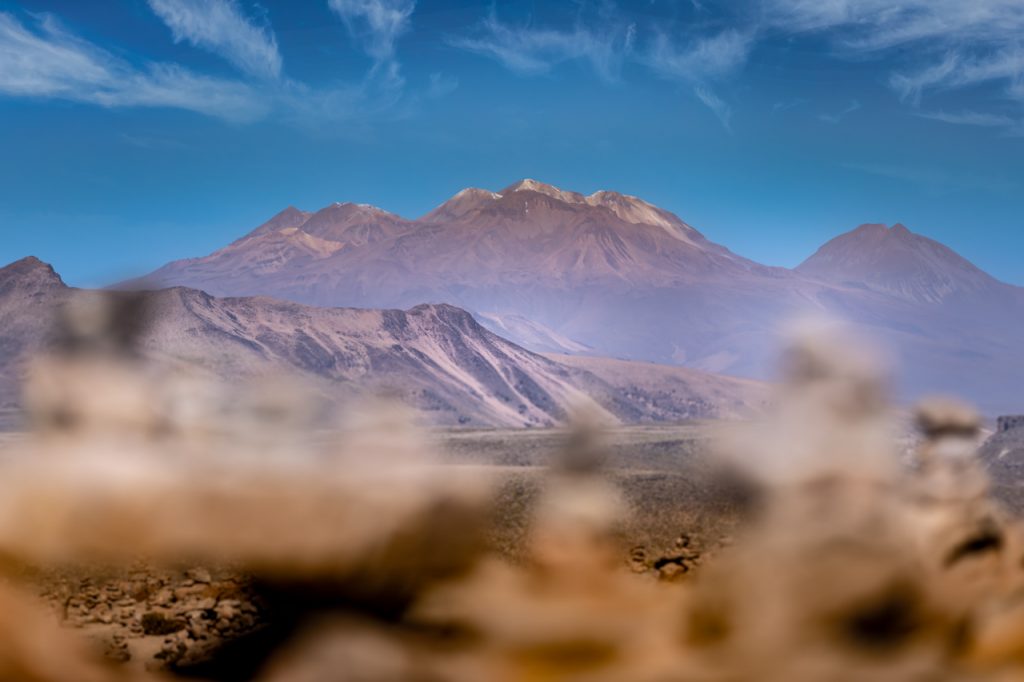
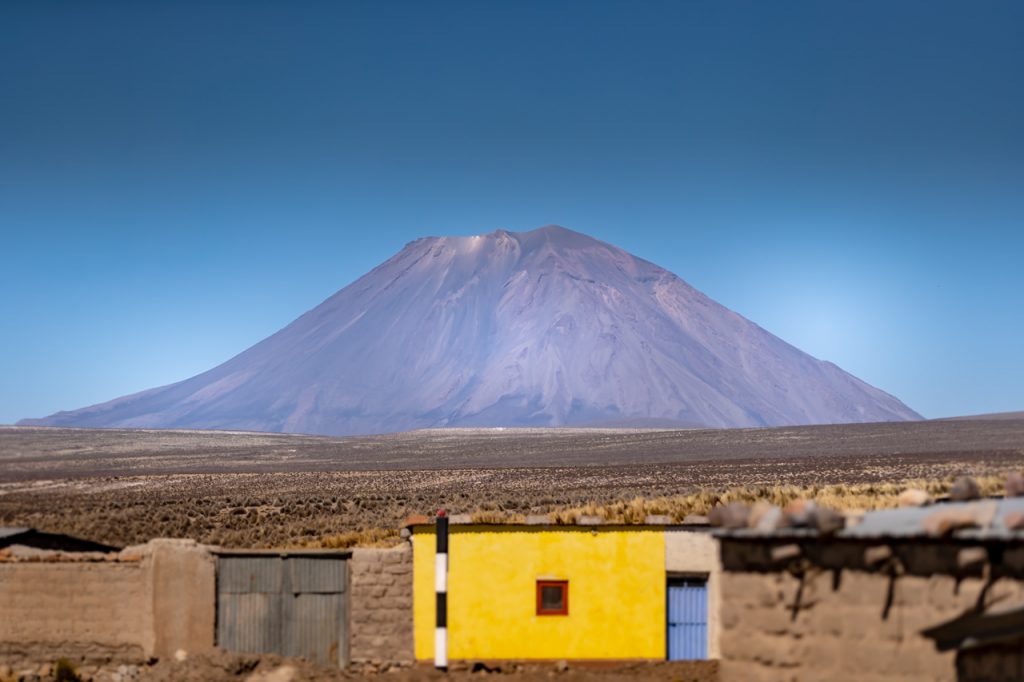
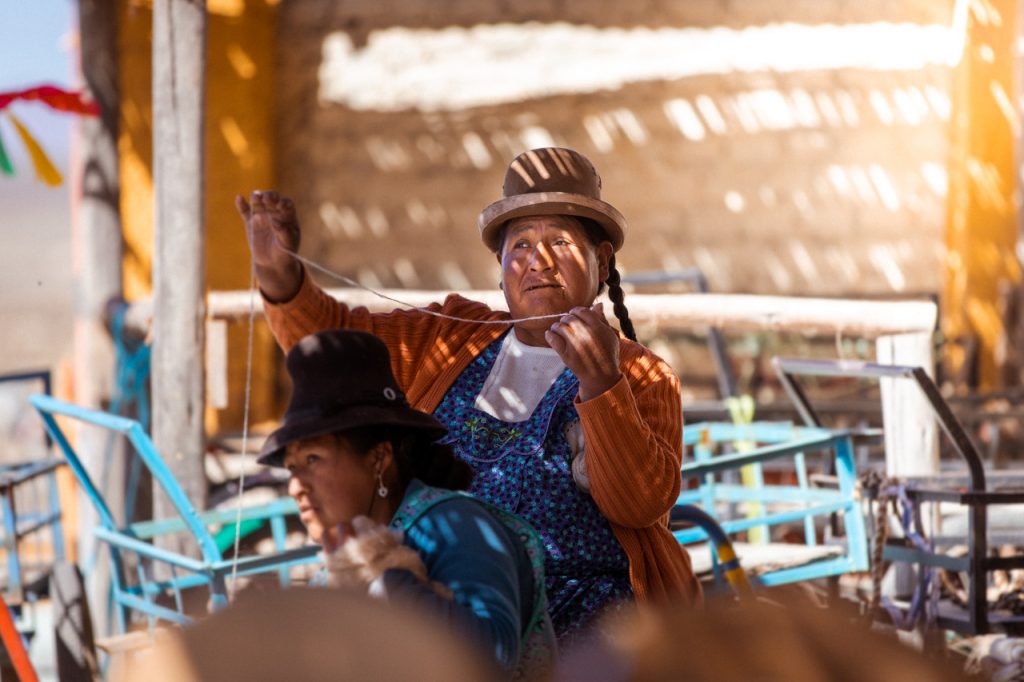
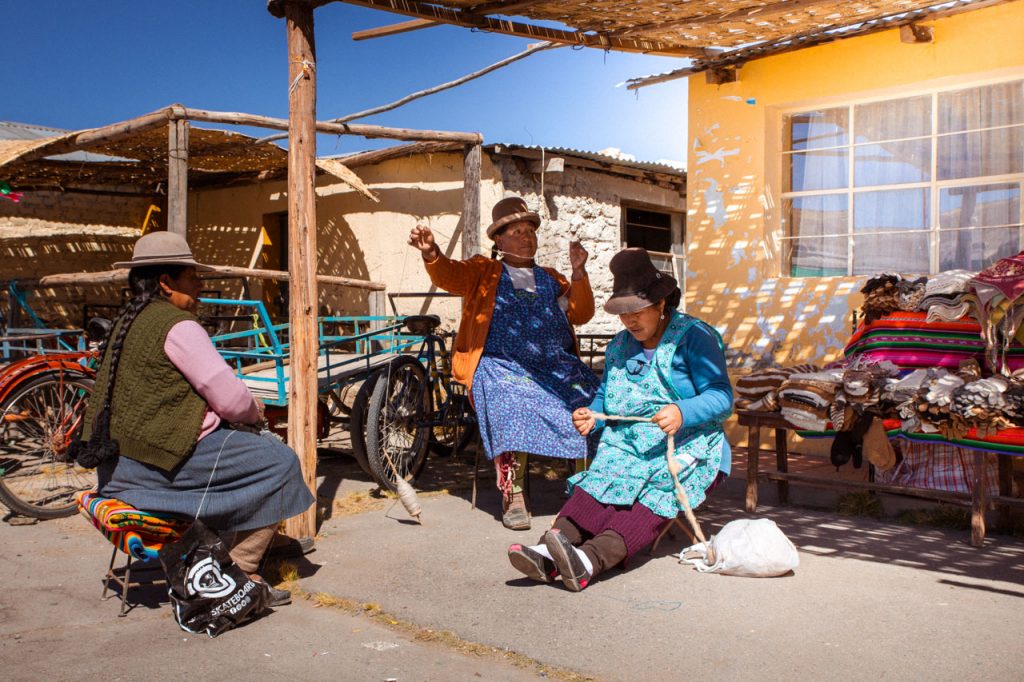
Between heaven and earth
The first thing we notice is the colour of the sky. It is deep, deep blue. We have just got off the minibus at Mirador de Los Volcanos. A viewpoint at an altitude of 4.900 meters. Up here we stand on the back of the Andes, the world’s longest mountain range, and on the horizon, volcanoes shoot up and look like jagged poles holding up the sky. It feels like standing between heaven and earth.
We take a few tentative steps like two astronauts who have just landed on a distant planet. Unlike Armstrong, we do not feel light on foot, but we can feel the light air rising to our heads. We feel dizzy when we gasp for a mouthful of air, and we are involuntarily short of breath as if we have just run 500 meters too fast.
Nevertheless, the thin air is perfect for the experience. Because it is difficult to find words that match what the eyes see. We take turns inhaling air and exhaling an excited adjective as we walk around the plateau, where boulders with inscriptions name the mountains and volcanoes around us. The height winner is Chachani at 6.075 meters.
It’s hard to understand how awesome the view is
“Are you all right?”, Fernando asks us, as ten minutes later we arrive back at the minibus after soaking up the enormous view. We are particularly fascinated by the volcano Sabancaya, which is in full swing. With great force, the cone-shaped peak spews volcanic gases, drawing a tail of smoke clouds in the sky. But we can neither smell nor hear it. The volcano is many kilometres away, fortunately.
“We’re perfectly fine”, we confirm to Fernando with a big smile. But unfortunately, it turns out that one of our fellow passengers is not. She passed out a few minutes ago, and by the sight of her pale face, it is clear she is not feeling well. “It is best that we drive on so that we can get down to lower altitudes”, says Fernando.
When we are back in the minibus, I can feel the dizzy feeling change into a creeping headache. Like an iron plate being screwed around the skull. Martin notices no difference, and I am still unaware that a little later I will become best friends with an oxygen bottle.
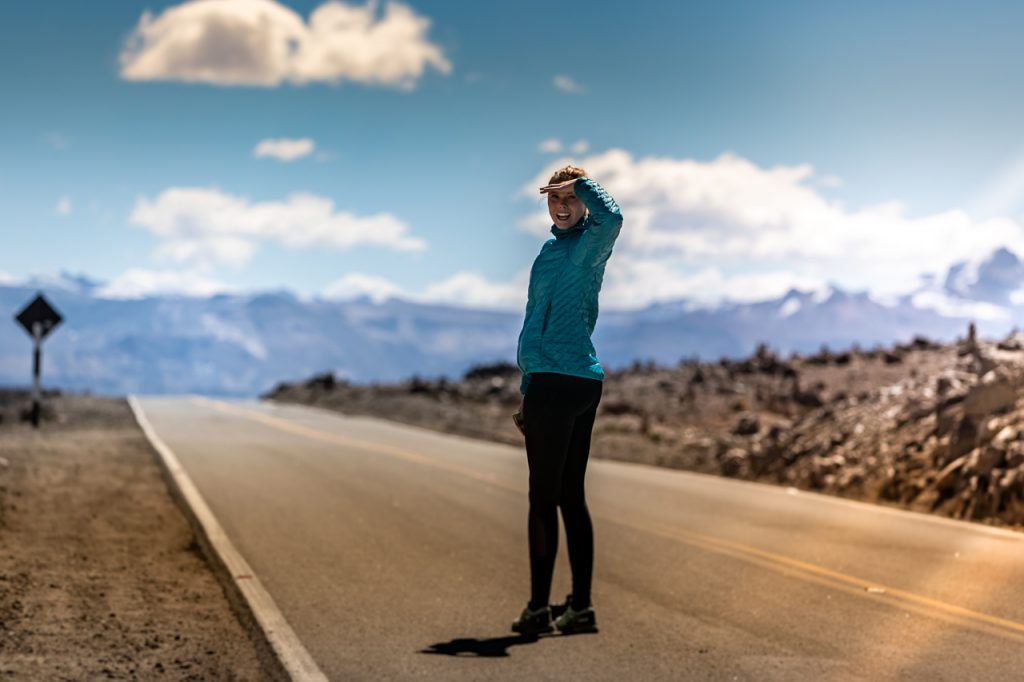
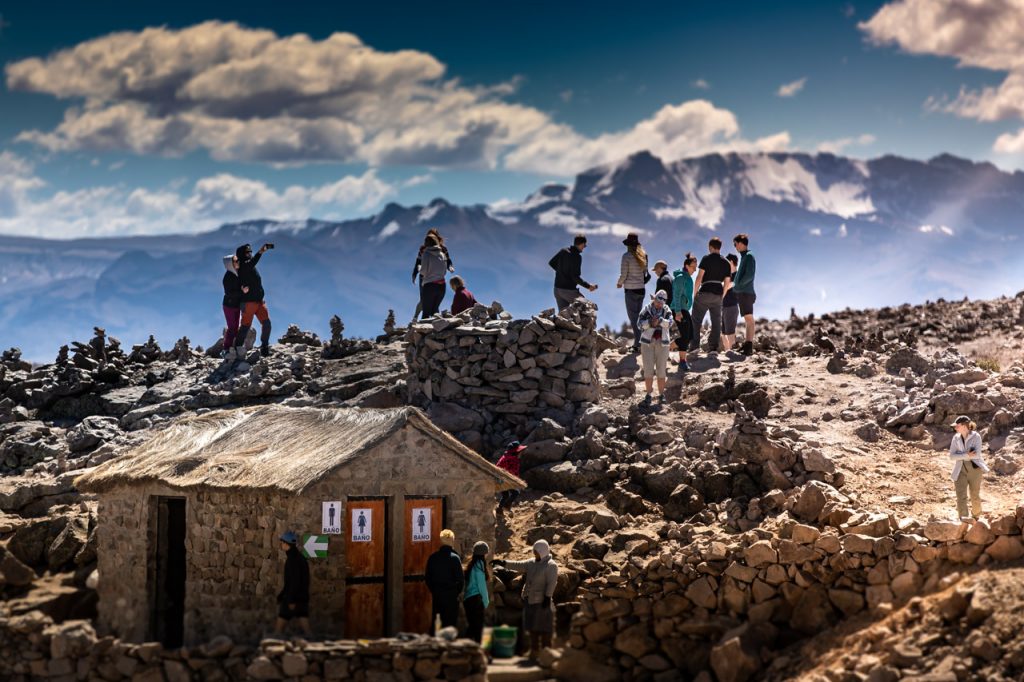
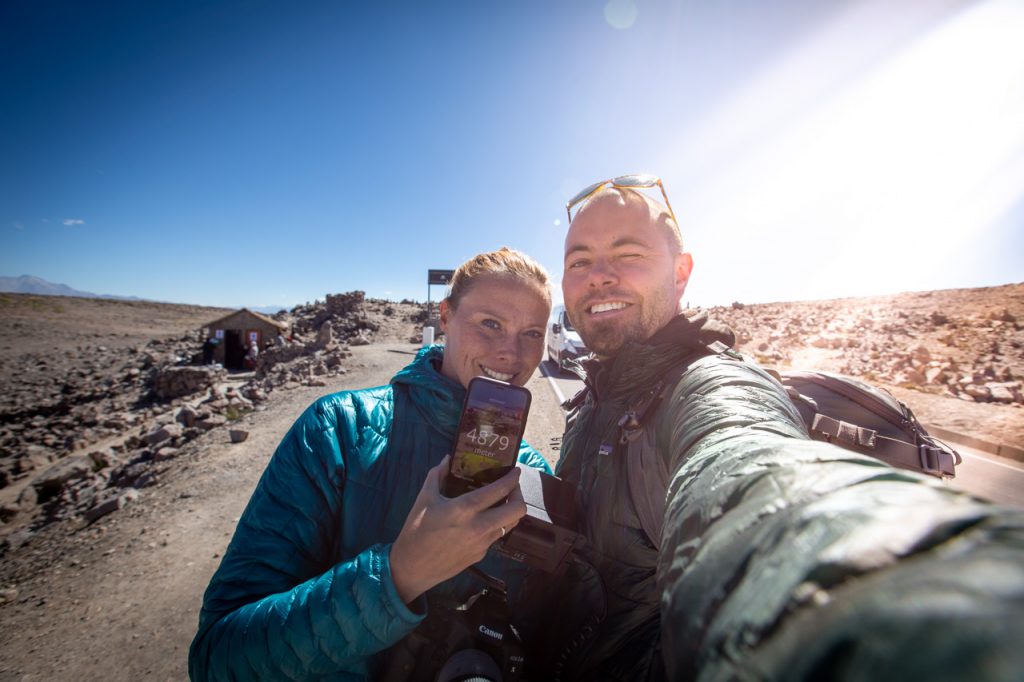
Hat display in Chivay
The descent to the mountain town of Chivay is a unique experience. Up in the heights, the gray asphalt road snakes its way through the jagged landscape. But the further down we go, the rounder the mountains become. The road softens and snakes down the slope towards an elongated valley.
In glimpses we can see Chivay, isolated between the mountains. With its 3.000 inhabitants, the town is the largest in the region and known as the entrance to the Colca Canyon – an area we will spend the next couple of days exploring.
“It’s impossible to get lost in the city”, says Fernando when he drops us off at the hotel in the early afternoon. Our tightly packed travel program reads free time until tomorrow morning, and we intend to explore a bit of the local surroundings before it gets dark.
Our hotel is located on the outskirts of Chivay, but the town is no bigger than that there are only 300 meters to the central square. There is a desolate atmosphere in the streets, and a cold wind stirs up the dry sand. The air is left golden, and we get the feeling of being spectators to a Peruvian western, when a man comes strolling in the dust. With a cowboy hat on his head and three llamas on a leash.
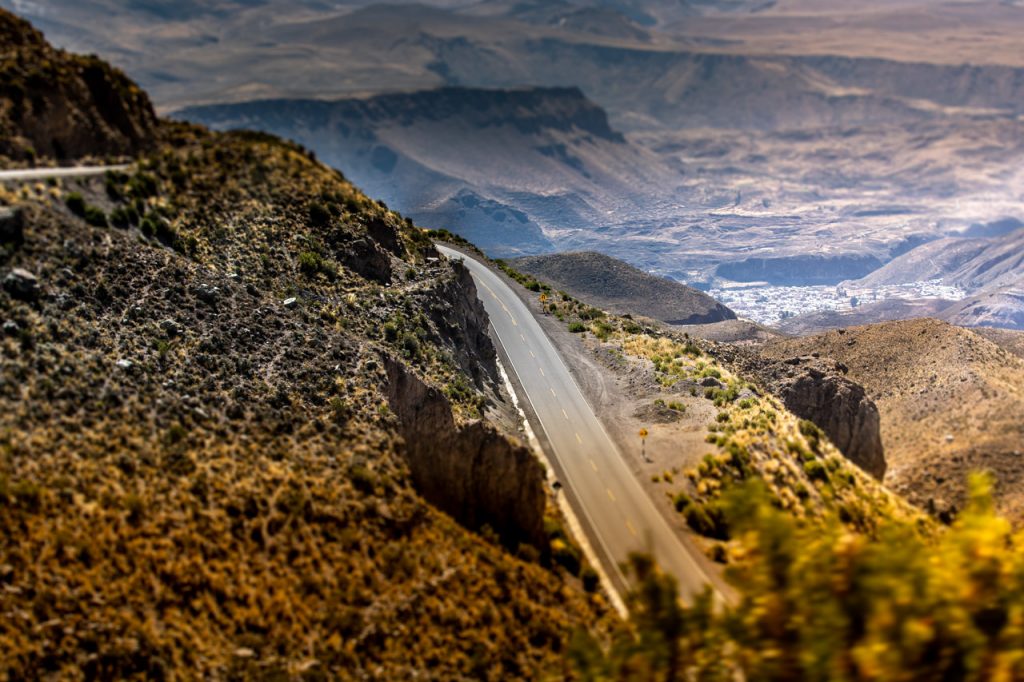
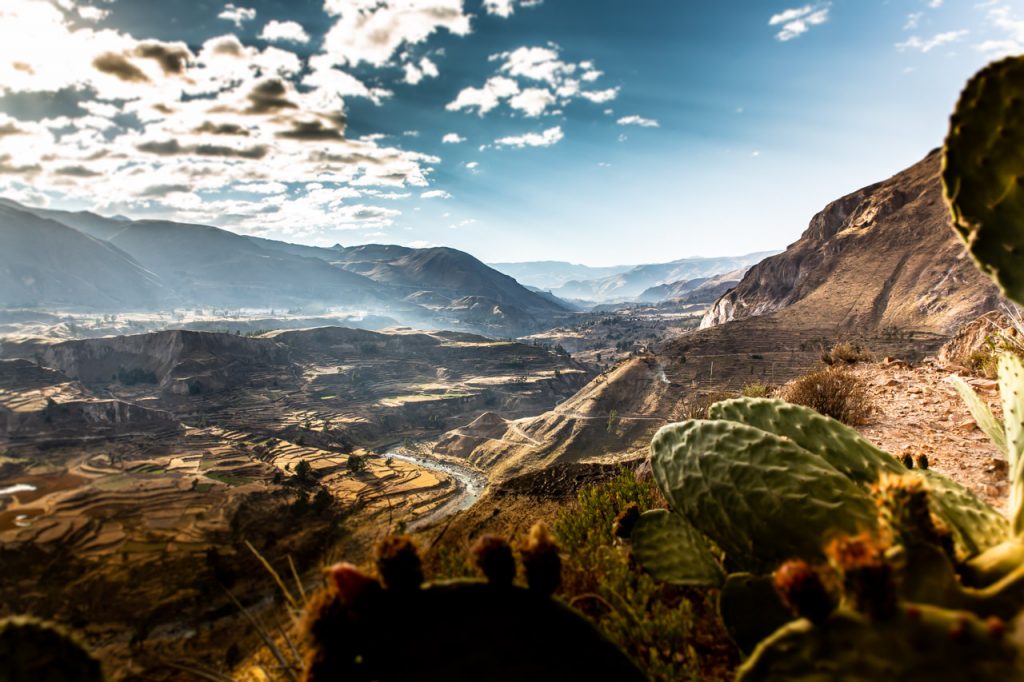
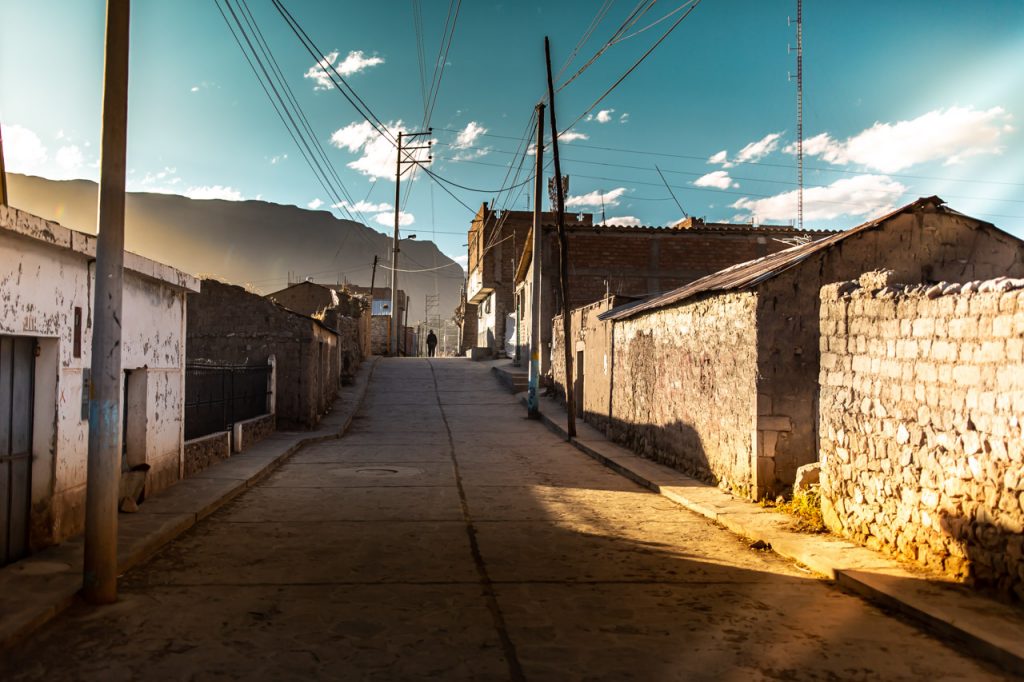
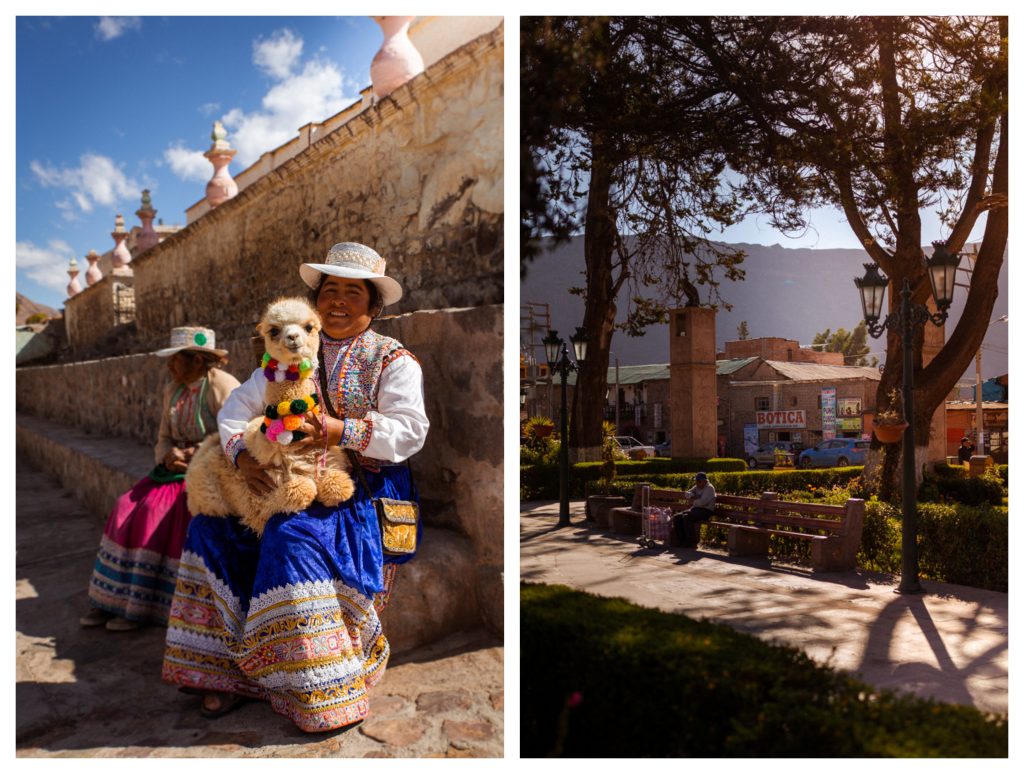
When we stand on the square a little later, we are greeted by a completely different sight. Both young and old hang out in the cozy square, and there is lively activity around a local market, where everything from flashlights to potatoes is sold. The middle of the square is decorated with flower bushes and a fountain playing orchestral music, so at first, we think there is a marching band nearby.
At the entrance to the market sits a group of women in brightly coloured clothes. Long, thick braids hang down the back, and on the head are white hats covered with sequins and plastic flowers. The hat culture in Peru is an entire chapter on its own, as each hat shows which community the locals belong to, and on our journey, through the country, we see many different varieties.
The hat culture in Peru makes small towns a colorful experience
We find rest on a bench and enjoy the many colourful and fascinating impressions. But we don’t get to sit for long, because slowly the pain in my head starts to grow, and we decide to go home to the hotel. All I want to do is close my eyes and disappear under a big, warm duvet.
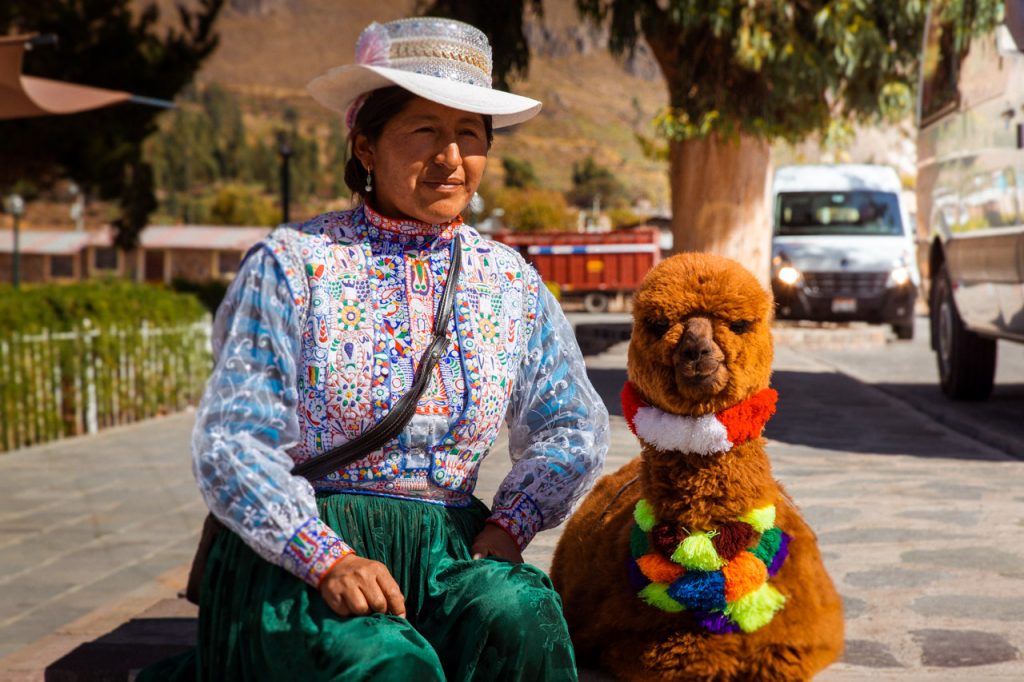
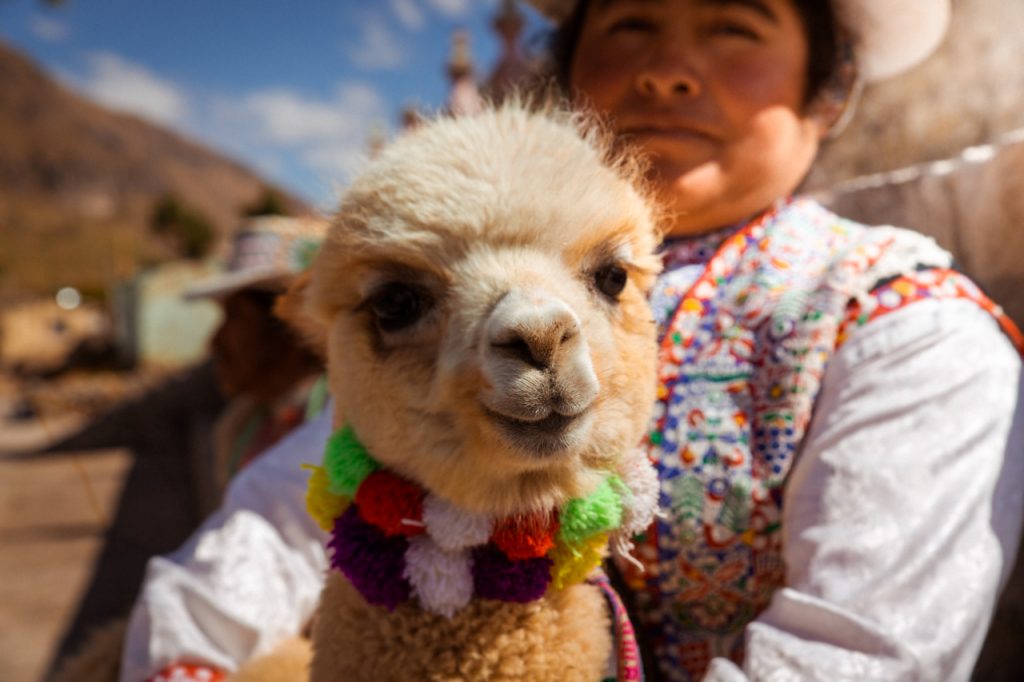
In bed with altitude sickness
“Mette, please tell me right away if you’re going to throw up, ok?” Back at the hotel, I passed out in my room with the worst headache in living memory. Martin has been down at the reception to talk to our guide about my symptoms.
They decide that to seek guidance from the hotel employees, as neither headache pills nor rest has helped the pain in my head. I’ve never had a migraine, but I imagine it must feel like this. Fortunately, I have not developed blurred vision or impaired coordination, which are more serious symptoms of altitude sickness.
A little later there is a knock on the door, and in rolls a broad-shouldered man with a caring look and a small oxygen tank on wheels. His English is sparse, but with warm hands, he helps me put a mask on my face and indicates with his fingers that I should lie with it on for six to eight minutes.
The oxygen tank hisses as the cold air envelops my mouth and nose, and with every breath, I can feel it doing me good. Martin squeezes my hand and silently we agree to have no regrets. Although traveling in the heights is challenging, the magnificent experiences are worth all the hardships. The next day, the headache has fortunately evaporated, and we are ready to drive on towards the Colca Canyon.
Peru is in many ways a bit of an adventure.
